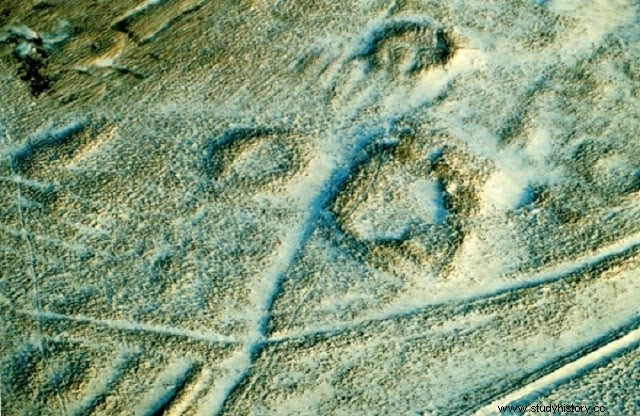Did the Celts coexist with the Vikings in Iceland? It is one of the explanations for the strange rings discovered in the Nordic country in the 1980s.
On the edge of the Seltjarnarnes peninsula, next to the Örfirisey nature reserve to the east of Reykjavík, there are a series of ring-like structures large, only visible from the air.
The rings have never been the subject of systematic archaeological investigation or excavation, but researcher Þorgeir S. Helgason believes they may be the ruins of ancient Celtic settlements , from the same time that the Vikings settled in Iceland, and erected by people from Ireland.
Discovered in the 1980s, they were studied in the late 1990s by researchers from the National Museum who determined that the settlements were built a few years after the volcanic eruption of Torfajökull in 871 (the last eruption is in 1477). This date fits with 874 as the year of the first settlements on the island recorded in the sagas.

However, some radiocarbon analyzes have suggested that the settlements could have begun up to 100 years before the arrival of the Norwegian Ingólfur Arnarson in Reykjavík to found the first permanent settlement, as documented in the Landnámabók or Book of Settlements. The Landnámabók was compiled in the 12th century by the historian Ari Thorgilsson and narrates, in the first of its five parts, the discovery of Iceland and the history of its first settlements.
Arnarson was not the first Nordic on Icelandic lands, a few years before Naddoddr (considered the first man to set foot on the island), Hrafna-Flóki Vilgeroarson (who gave him his current name), and Gardar Svavarsson had arrived. None of them seem to have lasted in place beyond one winter.
The latest archaeological excavations found a settlement prior to that of Arnarson, although from the same decade, but it is unknown who could have built it.

Also according to the Landnámabók, the Vikings who arrived from the British Isles brought with them slaves of Celtic origin , and indeed genetic studies confirm that between 20 and 25 per cent of the island's population have ancestors from Ireland. It is possible that they maintained separate building traditions, hence the presence of the rings.
Or maybe they can be related to the Irish monks called papar that supposedly arrived on the island throughout the 8th century, a fact cited by literary sources but not supported by archaeological remains until a few years ago. Ruins of a hut discovered on Hafnir have been dated indicating that it was abandoned sometime between 770 and 880.
The Landnámabók says that these monks left behind religious books, bells, staffs and other objects, and that this occurred before the arrival of the Norsemen, which coincides with the finding.
According to Helgason, although the rings are unique in Iceland, they correspond to constructions common in Ireland until the 12th century, residential enclosures surrounded by a protective wall, which are also only visible today from above.
